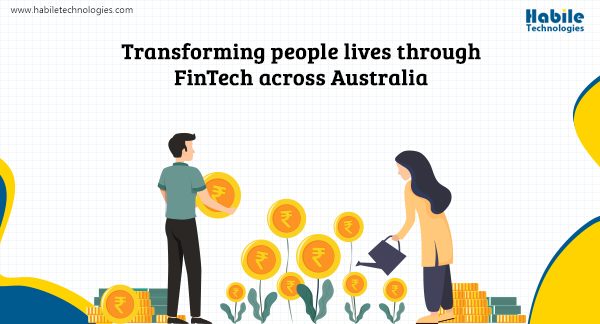How FinTech Is Transforming
Microfinance Institutions In Australia



Donna Cleeland from Australia was a single mother to three young kids. When her husband left the family, she was left without access to a bank account or a regular job to support her family. This led to major life complications. Add to it the demands of running a stable household, and the situation seemed precarious for Donna.
This is when she heard about small finance loans from credible lenders here in Australia. Till date, she has availed of 5 such loans up to $2000 to pay for basic comforts for her kids – including a washing machine that would’ve otherwise taken a year to arrange funds for.

This is the power of microfinance providing a positive impact to families and companies across Australia. New research shows that microfinance truly embodies the synonym of ‘Small is big’ here in Australia. An instance is the NAB support of micro enterprise businesses. Such financial support has helped raise $44 million in revenues and led to employment of 300 deserving individuals in the last 5 years.
In Australia, we see microfinance rapidly transforming with shifting customer preferences and evolving market demands. This is where fintech comes in as a viable solution to improve the underlying objectives of financial inclusion for all.
Fintech in Australian microfinance domain
In the present economic scenario, Fintech or financial technology, has gathered immense popularity. It aids financial organizations, with a quicker and effective delivery of financial services to customers.
A consumer can judge the impact of this term, when he sees all traditional banking activities now possible on a smartphone in a few taps. Thus, detailed information is at his fingertips, without stepping out to inquire about it. That’s the actual impact of Fintech for the new age customer of today.
Fintech is leading to a dramatic shift in the traditional business model of microfinance organizations. The rapid proliferation of smartphones ensures that the regular activities of microfinance are now transformed. These include credit approvals, disbursement, tracking, payments, and remittances.
What part of the demographics is impacted by microfinance?
Latin America, Africa, and Southeast Asia were the key recipients of the benefits of microfinance. The field emerged as a need to alleviate poverty and improve the economic conditions of those people or institutions who typically couldn’t get a loan from a traditional lending institution like a bank. However, with increasing popularity, we see many lenders opening up operations here in Australia too.
Some of the key demographics that are impacted positively by fintech include the ‘bottom of the pyramid’ people or businesses. For them obtaining loans through regular lending channels will be impossible. We see a lot of commercial players emerging in order to serve the needs of these people who find it difficult to get good loans from banks.
How Fintech helps here?
While Australia has 98.90% of its population with a bank account, many out of this remain unbanked due to many reasons like geographic barrier or tech limitations.
With fintech, the concept of financial inclusion pervades far and wide across the expanse of the continent. Through bank agent networks, people in remote or rural areas can now operate bank accounts through smartphones or feature phones. This way more and more people can now come under the banking ambit and build a suitable credit profile to help them successfully apply for the various loan products on offer.
Speaking of credit scores, this is also an area where fintech can deliver massive gains to the microfinance institutions. It is obvious that these institutions cannot use the same yardstick as traditional banking institutions to lend money or determine creditworthiness. With fintech, alternate credit worthiness checks become easier with solutions driven by AI-based algorithms. Such tools will consider factors like social media profile, utility bill payment history and its promptness, and area of residence. Based on these factors, the microfinance institutions can assess whether a person is good enough to be disbursed a loan or not.
Such alternative models of working have enabled the microfinance institutions to reach out to the crucial category of small businesses that employ other people but are yet not able to access credit to grow their business and generate employment. These borrowers don’t strictly come under the purview of the working of microfinance (which is primarily catering to individuals rather than businesses). However, the underlying principle is similar. Small businesses who haven’t built a credit profile now need not be troubled by lack of credit scores in order to secure a loan. Credit scoring algorithms brought about by fintech helps in delivering the right assessment of a person’s creditworthiness.
Advantages
- The solid impact of fintech is obviously evident from its impressive potential to introduce a new era of competition within the microfinance companies.
- They not only improve employability potential but also aid in uplifting the overall Australian economy with widespread access to credit.
- Authorities within the microfinance and small sector lending have easy access to relevant and meaningful data that goes beyond the traditional credit scoring norms employed by banks.
- With intelligent use of the social media involving sophisticated algorithms, microfinance institutions can get accurate and refined analysis of creditworthiness of the applicant.
- Fintech allows deeper understanding of the previously untapped sector. It helps unlock valuable insights with advanced technology. This helps in boosting deeply personalized services and customized products.
- The solutions provided by Fintech carry benefits for the old and established businesses and start-ups alike.
- Innovative fintech helps ensure products that are better tailored to distinct business needs of small and medium-size, which in turn improves the in-roads made by microfinance.
- With this, small businesses now get the chance to discover microfinance and small lending opportunities spread geographically far from them. With fintech, the barrier between the lender and the borrower simply melts down.
- With better access to credit, these SMEs get a chance to grow their business, improve the staff count, and thus boost the employment statistics in the country.
- The basic premise of wider inclusion is met with microfinance integrating fintech. The community-based ecosystems behind microfinance are fast replacing banks to provide traditional services that are inaccessible to the poor. This way, they serve the need of “credit invisibles”.
You May Also Like: Microfinance Software
Fintech and microfinance in Australia
Since the past one year or so, the Australian economy has seen tremendous evolvement and growth concerning financial technology. The fintech companies here are rapidly growing in numbers. Currently it is estimated that there are about 600 financial technology companies more than double the number that was recorded in the year 2015. In fact, at present, this has come up as the largest start-up sector in the whole of Australia. With a major focus on integrating the microfinance sector, the intersection has resulted in some interesting business ventures that truly epitomize the concept of small-scale lending.
Among these some key players include:
Prospa, a leading Australian online lender, has, so far, funded almost more than $500 million that has greatly helped small business owners to progressively expand their organizations. With simple application process, same day approval, and ownership of the Australian Credit License, it becomes a natural choice for many small businesses.
Zip Money offers microloans to its more than 700,000 customers, without any fees. Thus, they can go in for timely purchases in the markets. Its simple and transparent credit process makes it a hit with Australian residents and companies.
AfterPay Touch is yet another efficient digital payment system that caters to consumer-oriented organizations. This start-up has more than 800,000 customers and about 6,000 merchants engaged in the retail sector, onboard. Additionally, it essentially offers compliance, and fraud services and payment security at very cheap and affordable rates.
These microfinance companies have made impressive usage of fintech to add value to countless lives across Australia. This perhaps explains why fintech in microfinance has become a fast trending central component of the Australian economy. It has rightly democratized and equalized speedy access to finance.
You May Also Like: Opportunities for Fintech Startups in Singapore
To sign off
Concisely it can be stated that with the new concept of fintech taking over the economic sector in Australia, the financial solution has undergone tremendous changes for the good. In addition to the big and large-scale sector, the medium and small-scale industries to are getting a fair chance to grow and expand in their ventures.
This is led by the smart integration of fintech into microfinance. As a result, financial exclusion has shrunk and enabled start-ups and entrepreneurs alike to get ready access to capital that can be used to ensure the development in their work areas.
Related Post

Safeguarding Your Money: How Do Financial Institutions Detect & Prevent Frauds?
Introduction During the years 2021-22, Indian banks were confronted with

Fintech Lending Trends To Look Out For in 2023
What does 2022 say about the lending industry? For the

Is P2P Lending Really A Threat To Non-Banking Financial Companies (NBFCs)?
P2P lending is a relatively new kid on the block
- Email: [email protected]
- Sales Enquiries: +91 9344243151
- HR Enquiries: +91 9080996576
Quick Links
Resources
© 2024 LightFi India Private Limited. All rights reserved.
(Formerly known as Habile Technologies)